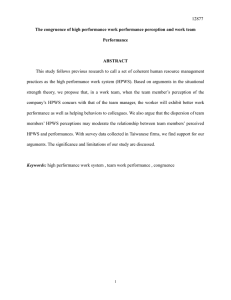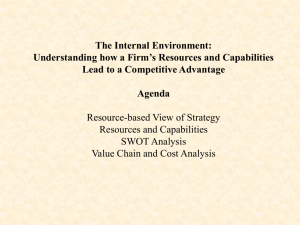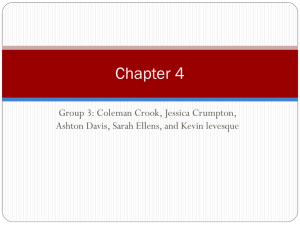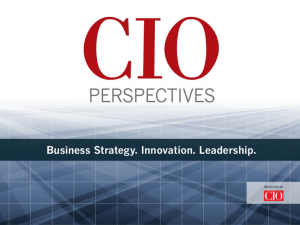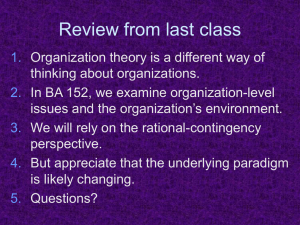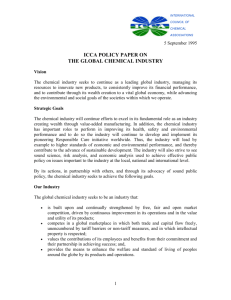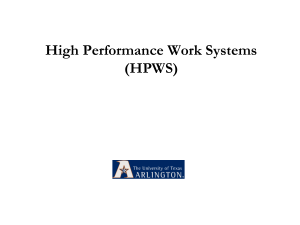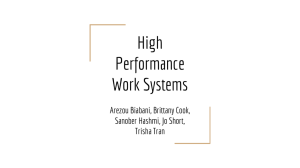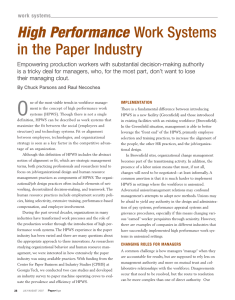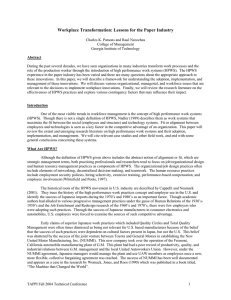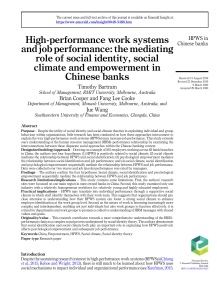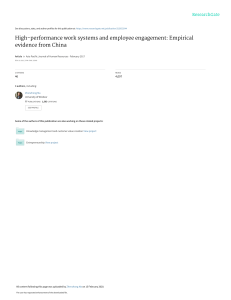Sustainability and Competitive Advantage
advertisement
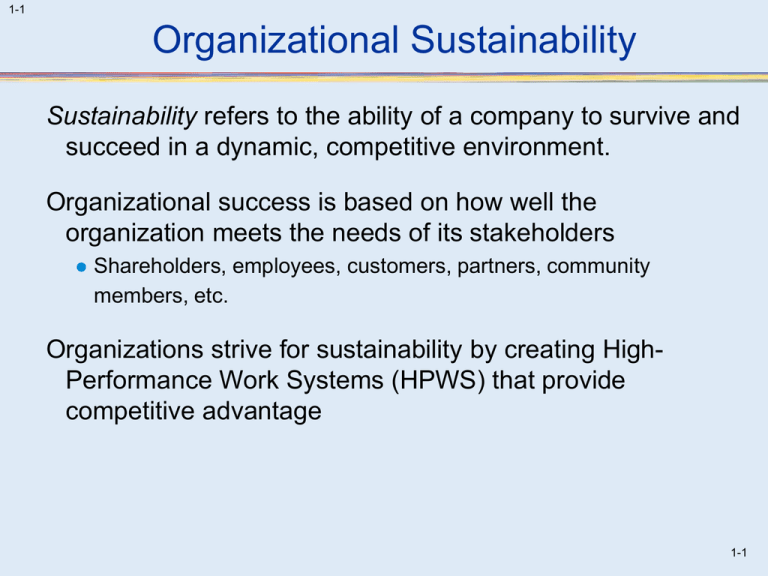
1-1 Organizational Sustainability Sustainability refers to the ability of a company to survive and succeed in a dynamic, competitive environment. Organizational success is based on how well the organization meets the needs of its stakeholders Shareholders, employees, customers, partners, community members, etc. Organizations strive for sustainability by creating HighPerformance Work Systems (HPWS) that provide competitive advantage 1-1 1-2 High-Performance Work Systems HPWS refers to the relationship between specific HR practices and critical outcomes measures Characteristics of HPWS 1. Bench strength of highly qualified applicants for each position 2. The use of validated selection and promotion procedures 3. Extensive training and development opportunities 4. The use of formal, multi-source performance appraisal Linkage of merit increases to formal appraisal processes. 5. High percentage of workforce included in incentive systems. 6. High percentage of workforce working in self-managed, project-based work teams (may be virtual teams). 7. High percentage of jobs filled from within 8. Partnering with other outside organizations 1-2 1-3 Competitive Advantage Competitive advantage is an organization’s ability to formulate strategies that place it in a more favorable position relative to the other companies in the industry Differentiation or competitive advantage Principles describing competitive advantage: Customer Value Organizational Reputation Uniqueness HR Approach 1-3 1-4 Competitive Advantage: Customer Value Customer value refers to customers’ feelings that they receive more value from their transaction with an organization than from its competitors Value chain analysis is a tool that maximizes customer value It assesses the amount of added value produced by each position, program, activity and unit; It allows the organization to refocus on its core competencies and requirements. 1-4 1-5 Competitive Advantage: Reputation Many customers seek out products and services at least to some extent as a function of the reputation of the organization selling the product or service Organizations simply possess valued and respected capabilities. In other words, the organization has developed a market credibility. 1-5 1-6 Competitive Advantage: Uniqueness Uniqueness refers to offering a product or service that your competitor(s) cannot easily imitate or copy Three mechanisms for offering uniqueness 1. financial or economic capability—a business receives special access to financial funding or is able to produce a good or service cheaper than someone else 2. strategic or product capability—the business offers a product or service that differentiates it from others 3. technological or operational capability—a business can have a distinct way of building or delivering its product or service 1-6 1-7 Competitive Advantage: HR Approach The development of related best practices over time provide a sustainable competitive advantage. Two basic approaches to HR best practices exist; these are not mutually exclusive. Universalistic approach: Seeks to identify methods of managing people that are effective for all organizations Contingency approach: Seeks to match different ways of managing people with the best method for producing goods and services 1-7 1-8 Universalistic Approach HR practices that are internally consistent and reinforce each other can create a consistent work environment. These are called HR bundles. Training programs + Compensation plans that support the same goal Two HR bundles are: Control strategies try to streamline processes by exerting high level of managerial control Commitment strategies emphasize organizational commitment through worker empowerment Commitment strategies are best because they lead to higher productivity and higher quality output 1-8 Thought question: What kind of messages would HR put out 1-9 Contingency Approach This approach looks at two dialectics: Internal labor focus vs. External labor focus Internal = growing employees in their sphere of influence; focus on long-term careers External = hiring those who already have the skills; limited focus on company attachment Cost focus vs. Differentiation focus Cost = seeks to produce goods and service inexpensively Differentiation = seeks to produce goods andDifferentiation services that are Cost unique Bargain Laborer Free Agent External Focus on efficiency Focus on distinctiveness Buying talent Buying labor Internal Loyal Soldier Focus on efficiency Creating talent Committed Expert Focus on distinctiveness Creating talent 1-9
